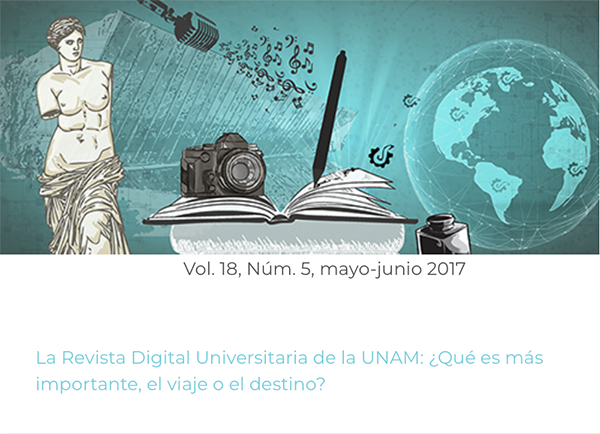Museums of the UNAM. Learning and entertainment sites
Keywords:
museums, museum spaces, university museums, interactive museums, learning, UNAM museumsAbstract
A museum is an ambience that keep’s memory of human activity and the relation of this action to the environment. There are many types of museums, with diverse content and representing different ideologies that speak to us about the past and present, and take us to a reflection about all that could be.
In Mexico City there are so many museums, that you could visit one every weekend and not repeat any for three years or more. The Universidad Nacional Autónoma de México (UNAM) has 27 museums open to the public. It has galleries and collections of many types, UNAM also preserves museum spaces such as botanical gardens, planetariums, observatories and other sites that promote science and culture.
In this article I invite the reader to meditate about what these museum spaces signify and cotribute, as tools to strengthen our cultural identity and prepare us to make decisions based on information.
References
Alderoqui, S. y C. Pedersoli (2011). La educación en los museos. De los objetos a los visitantes. Buenos Aires: Paidós.
Cuevas, A. M. (2012). Hacia una percepción multisensorial dentro de los espacios museísticos universitarios. En Rico Mansard, L.F., Abraham Jalil, B.T., Macedo de la Concha, E. (coords.), Museos Universitarios de México. Memorias y Reflexiones. México: UNAM, Dirección General de Divulgación de la Ciencia.
Chittenden, D., Farmelo, G. y Lewenstein, B. V. (2004). “Creating connections. Museums and the public understandig of current research”. AltaMira Press.
Definición. De (2017). Pensamiento divergente. Recuperado de: <http://definicion.de/pensamiento-divergente/> [Consulta: 9 de mayo de 2017].
Definición. De (2017). Pensamiento crítico. Recuperado de: <http://definicion.de/pensamiento-critico/> [Consulta: 9 de mayo de 2017].
De Varine, H. (2008). The Museum as a Social Agent of Development. París: ICOM News.
Falk, J. H., Dierking, L. D. (2000). Learning from museums. Visitor experiences and the making of meaning. EUA: AltaMira Press.
Hernández Hernández Francisca (2015). Evolución del concepto de museo. Recuperado de: <http://esferapublica.org/museo.pdf> [Consulta: 15 de mayo de 2015].
Hooper-Greenhill, E. (1999). “The education role of museums”. En Hooper-Greenhill, E. Education, communication and interpretation: towards a critical pedagogy in museums. Londres y Nueva York. Routledge 2d. Edition p.4. Edited by Eilean Hooper-Greenhill.
ICOM (2017). La Definición del Museo. Recuperado de: <http://archives.icom.museum/definition_spa.html> [Consulta: 9 de mayo de 2017].
Museos Universitarios de México (2015). Museos UNAM. Recuperado de: <http://museosuniversitariosmexico.blogspot.mx/p/unam.html>
Rico Mansard, L. F., Abraham Jalil, B. T. y Macedo de la Concha, E. (coords.) (2012). Museos Universitarios de México. Memorias y Reflexiones. México: UNAM, Dirección General de Divulgación de la Ciencia.
Sánchez, M. C. (2012). “Museos universitarios de ciencia”. En Rico Mansard, L.F., Abraham Jalil, B.T., Macedo de la Concha, E. (coords.), Museos Universitarios de México. Memorias y Reflexiones. México: UNAM, Dirección General de Divulgación de la Ciencia.
Smith Bautista, S. (2014). Museums in the digital age: changing meanings of place, community and culture. EUA: AltaMira Press.
Witker, R. (2001). Los museos. México: Consejo Nacional para la Cultura y las Artes (CONACULTA).
Published
Issue
Section
License
Copyright (c) 2020 Revista Digital Universitaria

This work is licensed under a Creative Commons Attribution-NonCommercial-ShareAlike 4.0 International License.

Revista Digital Universitaria es editada por la Universidad Nacional Autónoma de México se distribuye bajo una Licencia Creative Commons Atribución-NoComercial 4.0 Internacional. Basada en una obra en http://revista.unam.mx/.






